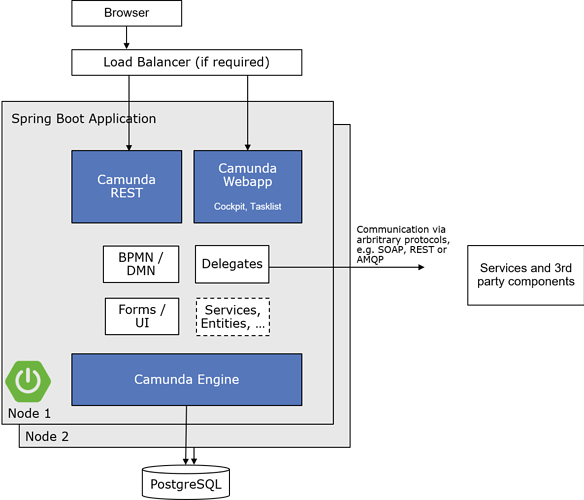@Kiran_Balakrishna there’s no duplication of ids. Process instance id, task id, and execution I’d, etc are always unique across the process engine. So there won’t be any duplication. Camunda uses Strong UUID generator for key generation (implementation based on the current time and the ethernet address of the machine it is running on ).
/*
* Copyright Camunda Services GmbH and/or licensed to Camunda Services GmbH
* under one or more contributor license agreements. See the NOTICE file
* distributed with this work for additional information regarding copyright
* ownership. Camunda licenses this file to you under the Apache License,
* Version 2.0; you may not use this file except in compliance with the License.
* You may obtain a copy of the License at
*
* http://www.apache.org/licenses/LICENSE-2.0
*
* Unless required by applicable law or agreed to in writing, software
* distributed under the License is distributed on an "AS IS" BASIS,
* WITHOUT WARRANTIES OR CONDITIONS OF ANY KIND, either express or implied.
* See the License for the specific language governing permissions and
* limitations under the License.
*/
package org.camunda.bpm.engine.impl.persistence;
import org.camunda.bpm.engine.impl.cfg.IdGenerator;
show original
Kiran_Balakrishna:
Can we configure this?
The architecture you’re referring is the recommended architecture of camunda spring boot deployment model.
Refer this post:
@abhishekrajapurohit , the camunda-springboot architecture which you’re referring is incorrect. You can run the camunda webapps in separate node, but still it requires process engine with job executor disabled and connected to same database. So in that case i would suggest you to setup the Heterogeneous cluster setup.
This is the best way (homogeneous cluster) of setting up camunda-springboot architecture .
[image]
But if you’re looking for heterogeneous cluster setup of camunda-springboot ref…
2 Likes
